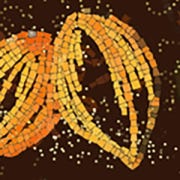Pulp (Non)-Fiction

While we all may love chocolate, we all need to give cocoa pulp the love it deserves.
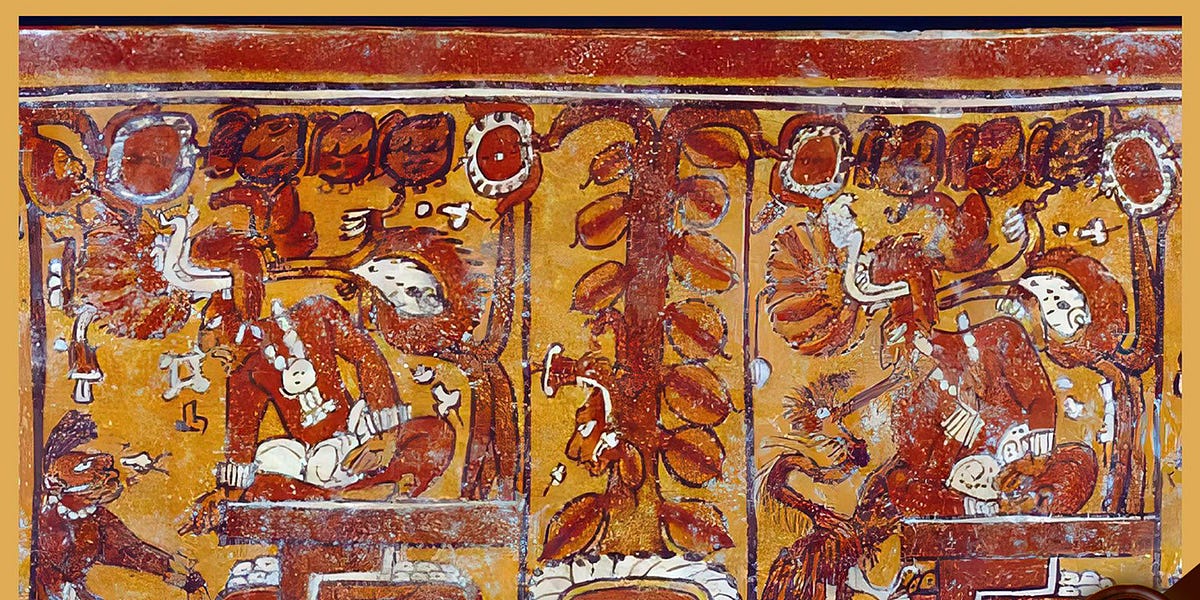
Click to read Birgitte’s first letter to me if you have not already read it.

Birgitte’s response to my response – cocoaception!
Dear Birgitte:
Merry Happy New Year to you and yours! Reflecting back on your Holiday Tour marathon, a truly Herculean effort as you say – twenty-five stories in twenty-five days; a digital advent calendar of a sort. For me, the month of January was punctuated by a ten-day trip to Nigeria, my second to that country and the sum total of all my visits to cocoa-producing countries in Africa.
In your letter you talk about “first times” – the first taste of fresh cacao, a first kiss; those experiences you want to remember and those you don’t particularly want to be reminded of. While I remember the circumstances of my first taste of fresh pulp during the trip to Ecuador in 2003 I wrote about in my first letter, I don’t remember anything about the experience of what I tasted.
The same thing is true about my first tastes of single-origin chocolate.
I remember the circumstances of purchasing the bars (in Cannes, seven of them, all made by Maison Bonnat) but what I don’t remember is any specific sensory impressions when I first tasted them. I served all seven as a dessert course after a dinner party I co-hosted in my apartment on the UWS of Manhattan. I tore the location name off each wrapper and put it onto a plate with the broken up pieces of the corresponding bar. All I did know (teased out from what I remembered from a class at the Alliance Française nearly a decade earlier) is that the beans used to make each bar were from different places (two of which I did not recognize at first), they all had the same cocoa content (75%). As they were all from the same maker what we were tasting was the differences in the beans. (But I don’t remember if that was a contemporaneous thought or something I overlaid onto the experience, later.)
What I do remember from that tasting was that each of us had different favorites, for different reasons. That is what I took away from the event – we (five or six of us) were all eating the same chocolates, but we all tasted different things and we all had differing preferences. There are times, today, when I wish I was paying closer attention that night, and that I took notes, and those feelings of regret are some of the drivers for the way I now apprach tasting classes, thirty years on.
You are right when you write, “... chocolate gives you multiple first times, because every bar is so different.” But I think there is more to it than that, at least for me. I am reminded of an exercise I undertook during my junior year at RISD, which was to go to the same garden and try to see with fresh eyes – to see something new – each time. Each visit was with a different camera, sometimes with a flash, a different film, and at different times of the day. I visited that garden at least three times a week for an entire semester, each time trying to forget what I already “knew” about the plants and light and hardscape, and seek to find something new.
Nowadays, when people ask me about my favorite chocolates, one of my answers is, “I am an equal-opportunity chocolate fan.” What that means is that I give every chocolate equal footing to impress or disappoint, no pre-judging. So each time I approach a chocolate – whether for the first time or if I am revisiting it – I think back to my garden experience and apply the lessons and discipline I learned there to what I am tasting.
Back to pulp: There are three major experiences with cocoa pulp that stick in my mind.
1️⃣ The first dates back to 2010 and my first trip to Bolivia and the Hacienda Tranquilidad. There I spent a morning working with a family (father, daughter, and two sons)n harvesting pods. The next step was to break open the pods and remove the seeds, which were placed into a bag tied to a stick between two trees. The father dug a shallow depression below and lined it with banana leaves. Juice from the wet mass dripped into that improvised bowl. Taking half a pod, the father scraped the insides with his machete, fahioning a cup. Scooping up some of the juice, he handed the cup to me – and I drank. It was warm, sweet and acidic at the same time, thick, floral and fruity at the same time ... more than a dozen years later this remains one of the most memorable culinary experiences of my life.
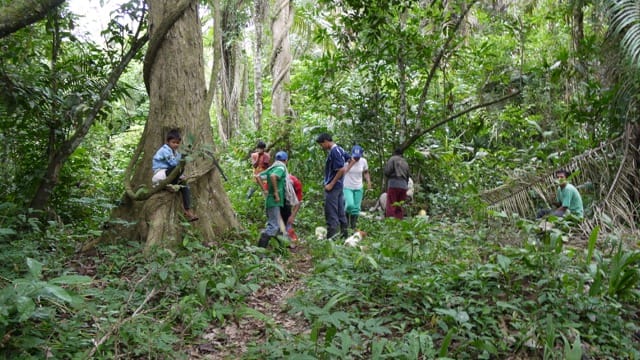
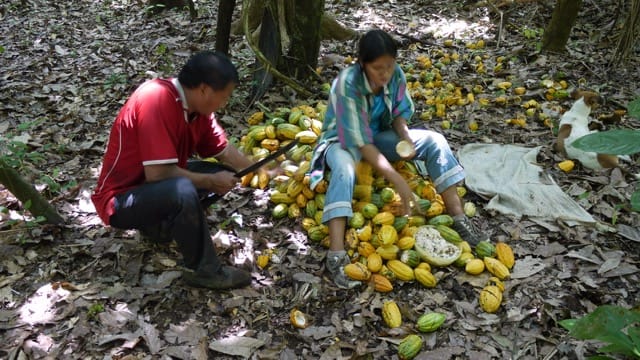
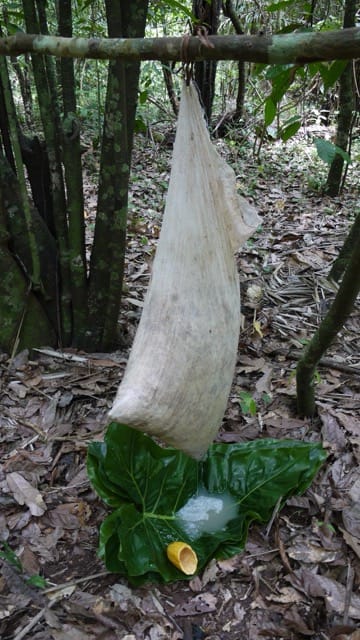
[L]: Gathering before heading out to harvest pods. [C]: Father and daughter opening pods and removing the seeds. [R]: The bag is full of the wet mass and juice is dripping into the depression below. As the family is paid by weight, the goal is to get this bag to the collection center as soon as possible. But rather than waste the juice, they drink it!
2️⃣ The second dates to a trip to Perú in 2014. I spent the week in Lima for the Salon del Cacao y Chocolate before heading to Tarapoto in San Martín province for three days on La Ruta del Cacao. At some point we visited a farm where more than a dozen different varieties of cacao were growing in rows right next to each other. And all of the trees were full of pods. Standing in the hot bright afternoon sun on a very humid day, we went from row to row, tasting variety after variety of pulp. The differences in sweetness, acidity, amount of water, floral and fruity aromas was astonishing. If tasting one variety is amazing (and it can be), then a comparitive tasting is even more amazing.

I don’t have a photo of the mature trees that we pulled the pods off of to taste – but this photo might give you an idea how warm it was that day!

We had to cross the Rio Huallaga to get the other side where the clonal garden was. We loaded the vehicles onto this vessel.
3️⃣ The third one took place in 2016 in Tabasco, Mexico at the INIFAP research station during the Festival del Chocolate. Among the group were Stéphane Bonnat and Christopher Curtin (founder of Éclat Chocolat in West Chester, PA) and the first order of business was to visit the collection of cacao varieties in the collection. Careful to take pods from many trees we gathered around a table in one of the offices and opened the pods one at a time. What was memorable about that experience was watching Stéphane taste the pulp from each variety, ponder for a few moments, and then talk about how the flavors in the pulp would express themselves in a finished chocolate. An impromptu master class from a master chocolate maker.
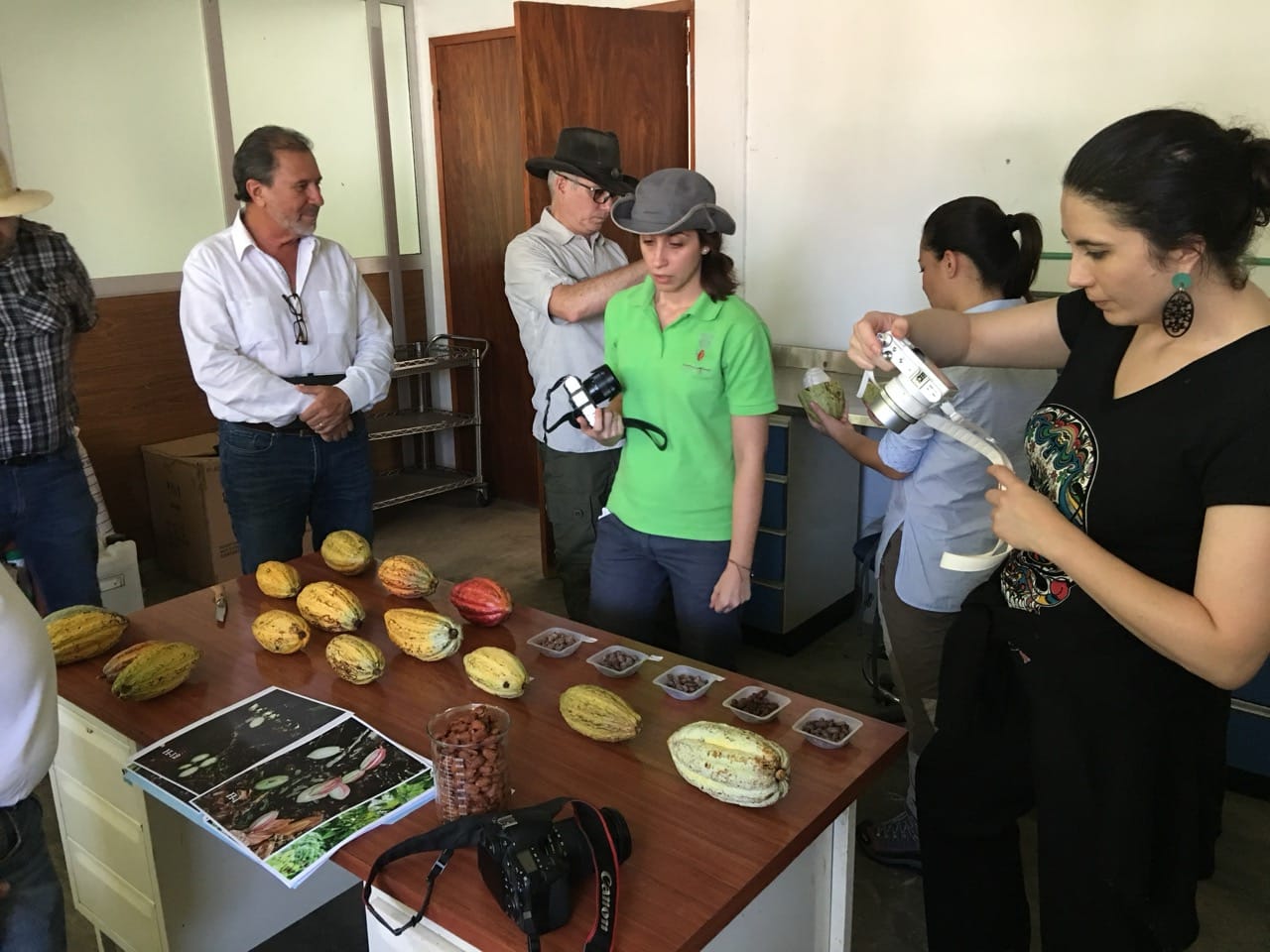
In this photo are [L-R] Pepe Nieves, the Tabasco Minister of Tourism (and cocoa farmer); Stéphane Bonnat (in the hat); Zoi Pepalexandratou of Zoto Cacao; Elisa Bonnat (back turned); and Maria Salvador Jiménez of Daarnhouwer. The pods on the table are the ones whose pulp
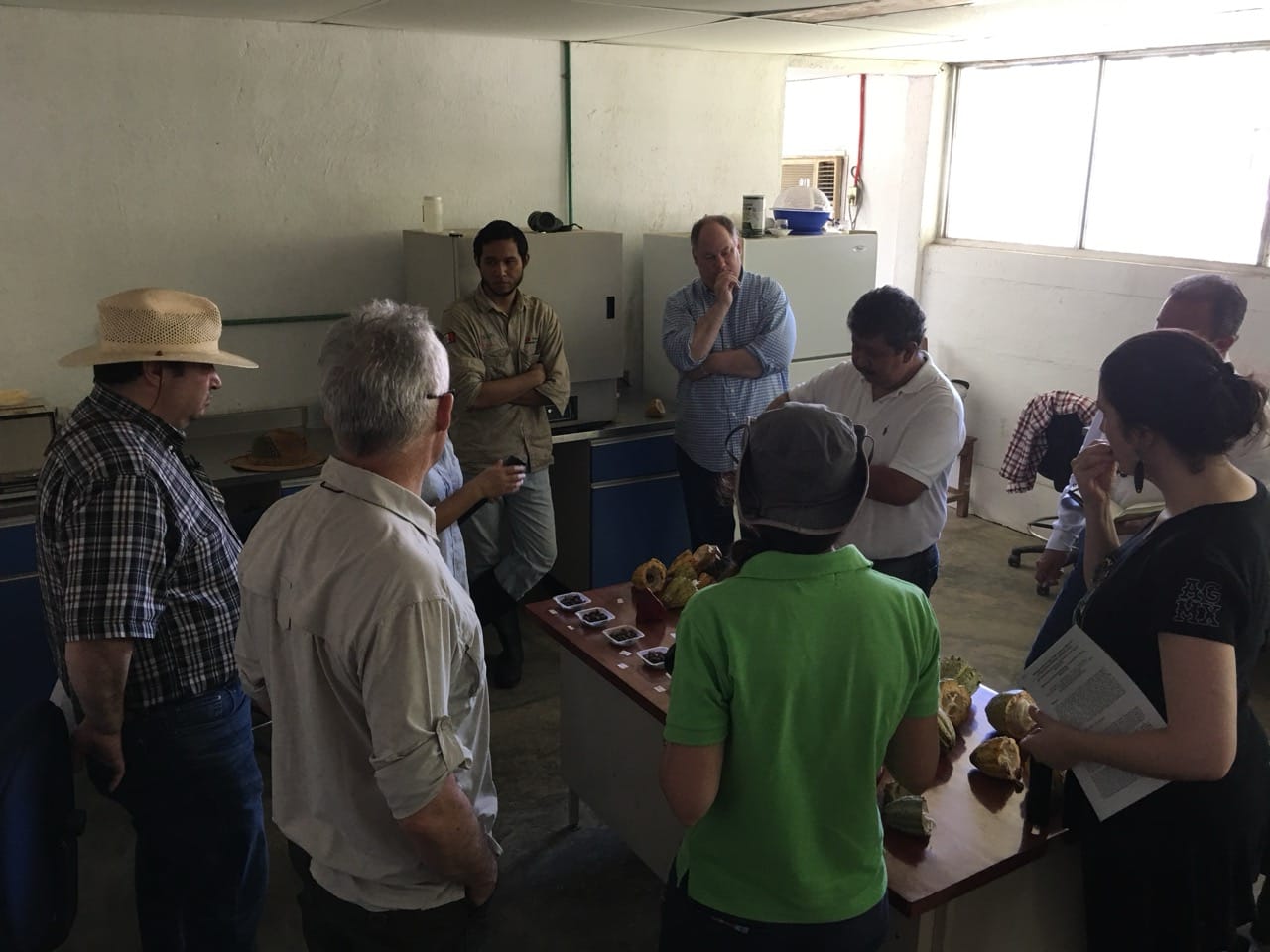
The pulp tasting was very serious (in addition to being seriously tasty). At the left, in the hat, is Alejandro Campos Beltran of the Hacienda La Luz and Chocolates Wolter. Christoper Curtin is in the blue shirt in the bar back, center-right. The gentleman in the white shirt is the director of this station (Cardenas), Dr. Alfonso Azpeitia Morales. One of the reasons we were in Tabasco at this time was to work on the Denominacion Cacao Grijalva.
When it comes to memorable chocolates, most are parts of larger experiences (such as a bespoke foie gras bonbon made especially for my Discover Chocolate in Paris tour during the Salon du Chocolat in 2010) but there is one chocolate bar that stands out among all others, and that is Felchlin’s Cru Sauvage 68%, made from the 2006 harvest of wild beans from the Hacienda Tranquilidad. Nearly two decades later this is still the single best bar of chocolate I remember ever having eaten. Ever. The bar was the iconic expresssion of Ecuadorian Arriba Nacional flavors (this cacao is now sometimes called Bolivian Nacional) – orange blossom and jasmine with the aromas bright and up in the nose. No bitternesss or astringency with a texture I would describe as dissolving not melting. For some reason Felchlin changed the percentage and other aspects of the recipe for the 2007 and subsequent harvests and it never again reached the height that it did that first year. The bar itself, very long, narrow, and quite thin, had the relief of an Andean Condor feather in the mold – emblematic of my experience with that bar.
/Clay
PS. I think it’s my turn to take the lead for the next round of correspondence. Two of the activities/roles we have in common is that we’re both published authors and we’re both educators. So, a heads-up.
